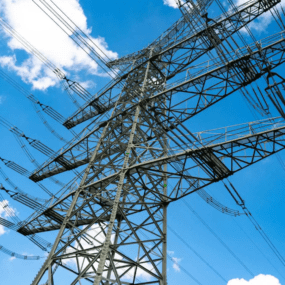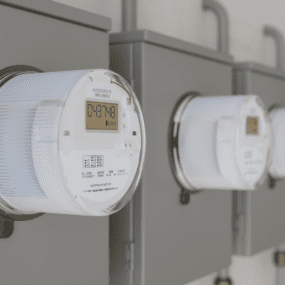Stepping into the emerging world of heat pumps
Vol. 15 – Watt in the Grid?

Vol. 15 – Watt in the Grid?

Sign up for our newsletter
Stay in the loop with all things GridX and beyond.
I recently sent my son to Outdoor Lab, a week-long program offered by the school district where kids get to take a break from middle school hallways to hike, climb, and participate in team building. Middle school itself can be an awkward stage, so I was not surprised to hear my son had reservations about the whole thing. What would he be doing there? Would it be too cold (Colorado is notorious for offering up freezing temps near Halloween each year)? Would it be fun? Would people be friendly? Was it worth going? Reassuring him as I packed a duffel bag weighing nearly as much as he does, I thought about how scary uncertainty can be. And yet, the things we are most unsure about can sometimes be the things that end up benefiting us the most.
In the world of energy, a significant uncertainty right now is the role of heat pumps in electrification and decarbonization. While I sit comfortably in my warm house, thinking about my son in a barely heated cabin with other middle school boys, the parallels become clear. Just as he grapples with the social dynamics of a camp-like setting, I wrestle with how to help unconventional heating technologies gain traction. Heat pumps and heat pump water heaters are crucial for decarbonization, enabling buildings to transition from fossil fuels for heating and hot water to electricity. Making this switch could cut home heating emissions by 35–93 percent across the U.S. while improving air quality and shielding residents from fluctuating gas prices.
And – just as outdoor camp can help the vulnerable population of awkward middle schoolers, so too can heat pumps benefit the disadvantaged. Late last year, a consortium of US states and territories representing more than half of the US economy announced a commitment to collectively reach 20 million residential electric heat pump installations by 2030. The best part? According to Rocky Mountain Institute, at least 40 percent of benefits will flow to disadvantaged communities. Surely this is a win-win for everyone, right?
Unfortunately, cost can be a major hurdle, even when you know the benefits. I hesitated at the price of Outdoor Lab, fully aware that it fosters middle school friendships far better than traditional classrooms. Similarly, the upfront costs of heat pumps might deter some from making the switch, despite their superior efficiency in converting energy into heat compared to even the best natural gas boilers. Fortunately, just as Outdoor Lab offers fundraising options, innovative rate design can make the upfront costs of heat pumps more palatable.
For example, lower volumetric rates could be beneficial because heat pumps generally use more electricity than traditional heating methods. Likewise, because most heat pump usage occurs during the non-summer months, utilities could offer seasonally differentiated rates to make heat pump adoption more attractive. Additionally, by designing time-of-use (TOU) rates for heat pump users (recognizing much of heat pump energy demand takes place during off-peak hours), utilities could help lower monthly bills. By customizing rate structures to align with the unique operating characteristics of heat pumps, utilities can promote widespread adoption and fully realize the advantages of this technology.
However, asking people to step into the unknown without reliable data can be a gamble. I would not have sent my kid away for a week if I didn’t know about the program and wasn’t sure he would be safe. Utilities likely want the same level of comfort in understanding how heat pump adoption will impact revenue and overall rate stability. To do this, experts recommend utilities use screening tools to help both them and consumers fully understand the financial impacts of various alternative rate designs before and during implementation. Companies like GridX are well-suited to help with these efforts, as our software enables utilities to design, test, and compare potential rate structures while providing personalized household-level rate education to help consumers and utilities realize the full potential of heat pumps.
When I pick my son up tomorrow, I fully expect to hear how the Outdoor Lab experiment was better than expected. In fact, I wouldn’t be surprised to hear he preferred it to regular school. I can only hope the energy industry ultimately feels the same. The most innovative technology and rate designs – while daunting at first – can ultimately be exactly what we all need to achieve decarbonization goals.




